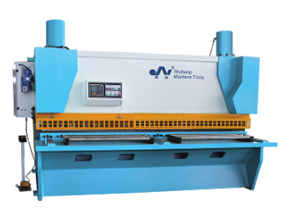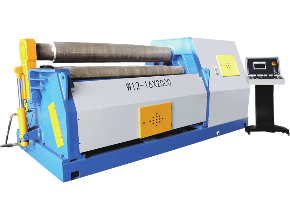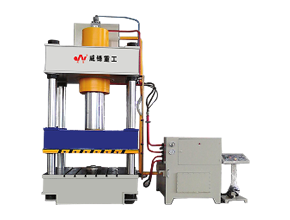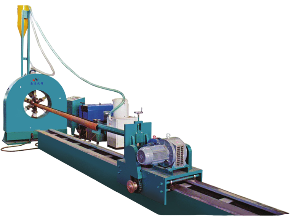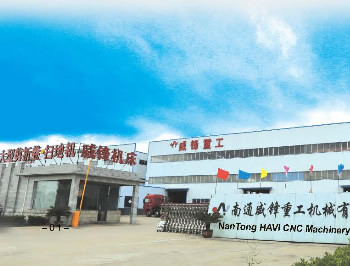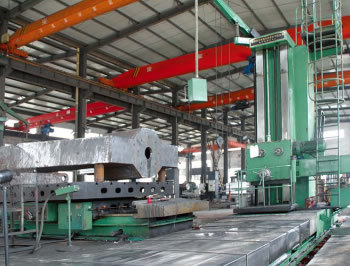CNC Shearing Machines: A Comprehensive Guide to Reducing Waste in Metal Fabrication
Release Time:
2025-05-20
CNC Shearing Machines: Reducing Waste in Metal Fabrication
In the realm of metal fabrication, efficiency and waste reduction are crucial for sustainable operations. One of the key technologies that have emerged to address these challenges is the CNC shearing machine. These state-of-the-art devices not only streamline the cutting process but also contribute significantly to minimizing material wastage. This article explores the functionality, benefits, and advancements of CNC shearing machines in detail, offering insights into how they can revolutionize your metal fabrication process.
Table of Contents
- Understanding CNC Shearing Machines
- How CNC Shearing Machines Work
- Advantages of CNC Shearing Machines in Metal Fabrication
- Reducing Waste with CNC Shearing Machines
- Types of CNC Shearing Machines
- Maintenance and Care for CNC Shearing Machines
- The Future of CNC Shearing Technology
- Frequently Asked Questions
Understanding CNC Shearing Machines
CNC shearing machines are advanced industrial tools designed for cutting metal sheets with precision and efficiency. Unlike traditional shearing methods, CNC (Computer Numerical Control) technology automates the cutting process, allowing for intricate designs and precise dimensions. These machines utilize a variety of blades and cutting techniques to shear metal, making them ideal for industries such as automotive, aerospace, and construction.
The Anatomy of a CNC Shearing Machine
At the core of every CNC shearing machine is a robust structure that supports various components, including:
- Control System: This is the brain of the machine, allowing operators to input specifications and monitor the cutting process.
- Cutting Blades: High-quality blades that can handle different types of metals and thicknesses are critical for optimal performance.
- Hydraulic System: Many CNC shearing machines use hydraulic power to enhance cutting force and accuracy.
- Frame and Base: The sturdy construction ensures stability and minimizes vibrations during operation.
How CNC Shearing Machines Work
The operation of CNC shearing machines begins with the operator setting parameters through a computer interface. This involves entering specifications for the metal sheet size, thickness, and desired cut pattern. Once the settings are confirmed, the machine executes the cutting operation by moving the blades with precision, shearing the metal as per the programmed instructions.
The Role of Automation in CNC Shearing
Automation is a game-changer in the cutting process, allowing for:
- Increased Speed: CNC machines can execute cuts much faster than manual methods.
- Enhanced Precision: Automation ensures that measurements are exact, reducing the likelihood of human error.
- Consistency: CNC machines can replicate the same cut multiple times without variation, ensuring uniformity across all pieces.
Advantages of CNC Shearing Machines in Metal Fabrication
Choosing to implement CNC shearing machines in your metal fabrication processes offers numerous advantages, including:
1. Improved Material Utilization
One of the most significant benefits of CNC shearing machines is their ability to optimize material usage. By precisely calculating cuts, these machines minimize leftover scraps and allow for better planning of material procurement.
2. Enhanced Operational Efficiency
With faster cutting speeds and automation, CNC shearing machines can significantly boost productivity. This means businesses can meet higher demands without compromising quality.
3. Labor Cost Reduction
As CNC machines automate the cutting process, the need for extensive manual labor decreases. This not only reduces labor costs but also allows skilled workers to focus on more complex tasks requiring human intervention.
4. Flexibility in Design
CNC shearing machines can handle a wide range of designs and metal types. This flexibility enables manufacturers to diversify their offerings and cater to various client needs.
5. Improved Safety Features
Modern CNC shearing machines incorporate advanced safety features, ensuring a safer working environment for operators. These features may include automatic shut-off systems, emergency stops, and protective enclosures.
Reducing Waste with CNC Shearing Machines
Waste reduction is a critical concern in the metal fabrication industry, where material costs can be substantial. CNC shearing machines significantly contribute to waste minimization through various mechanisms:
Precision Cuts to Minimize Scrap
By executing precise cuts as per the exact specifications, CNC shearing machines drastically reduce the volume of scrap metal generated during the cutting process. This precision translates to cost savings and resource optimization.
Dynamic Nesting Software
Many CNC shearing systems are paired with advanced nesting software that optimally arranges cut patterns on metal sheets. This technology analyzes various configurations to minimize waste, ensuring that every inch of material is utilized effectively.
Recycling and Reusing Scrap Metal
The scraps generated, even from precision cutting, can be recycled. Many manufacturing setups now incorporate processes for reusing scrap metal, further reducing the overall waste footprint.
Types of CNC Shearing Machines
There are several types of CNC shearing machines, each tailored to specific applications within the metal fabrication industry. Understanding these types can help businesses select the most suitable option for their needs:
1. Hydraulic Shearing Machines
Hydraulic shearing machines use hydraulic power to drive the cutting blades. Known for their strength and efficiency, these machines are ideal for thick sheets of metal and heavy-duty applications.
2. Mechanical Shearing Machines
Mechanical CNC shearing machines utilize mechanical systems to operate the cutting blades. They are generally faster than hydraulic machines and are best suited for thinner materials.
3. CNC Laser Shearing Machines
These machines use a focused laser beam to cut metal sheets with exceptional precision. They are ideal for intricate designs and complex geometries.
4. CNC Plasma Cutting Machines
Plasma cutting machines employ high-temperature plasma to slice through metal. They are effective for cutting thicker materials and are commonly used in industrial applications.
Maintenance and Care for CNC Shearing Machines
Proper maintenance is essential to ensure the longevity and optimal performance of CNC shearing machines. Implementing a regular maintenance schedule can prevent unexpected breakdowns and reduce operational costs.
Routine Checks and Calibration
Regularly checking the alignment and calibration of the cutting blades is crucial for maintaining precision. Operators should also inspect hydraulic fluids and replace them as necessary to ensure smooth operation.
Cleaning and Lubrication
Keeping the machine clean and well-lubricated prevents dust and debris buildup, which can impair performance. Regular cleaning schedules should be established to maintain optimal conditions.
Professional Servicing
Engaging with professional service providers for periodic in-depth inspections can help identify potential issues before they escalate, ensuring that the machine operates efficiently over its lifespan.
The Future of CNC Shearing Technology
The future of CNC shearing machines appears promising, driven by advancements in technology and increasing demand for efficient manufacturing processes. Emerging trends include:
1. Integration with Industry 4.0
As the manufacturing sector moves toward Industry 4.0, CNC shearing machines are expected to integrate more seamlessly with digital technologies, such as IoT and AI, enabling smart operations and real-time monitoring.
2. Enhanced Automation and Robotics
Further advancements in automation and robotics will lead to more sophisticated shearing solutions, enhancing precision and operational efficiency while reducing labor costs.
3. Eco-Friendly Practices
With a growing focus on sustainability, manufacturers are likely to adopt greener practices, such as energy-efficient machines and processes that minimize waste and resource consumption.
Frequently Asked Questions
1. What materials can CNC shearing machines cut?
CNC shearing machines can cut a variety of materials, including steel, aluminum, and other metals, depending on the specific machine's capabilities.
2. How does CNC shearing compare to traditional shearing methods?
CNC shearing offers enhanced precision, speed, and efficiency compared to traditional shearing methods, significantly reducing material wastage and increasing productivity.
3. What are the costs associated with CNC shearing machines?
The costs can vary based on the type of machine, features, and capabilities. However, investing in CNC technology often results in long-term savings through reduced labor and material costs.
4. How can businesses ensure minimal waste during metal fabrication?
Implementing CNC shearing machines along with effective nesting software can significantly reduce scrap and optimize material usage in metal fabrication processes.
5. Are CNC shearing machines suitable for small-scale operations?
Yes, there are CNC shearing machines designed for small-scale operations, making it accessible for businesses of all sizes to benefit from enhanced efficiency and waste reduction.
Conclusion
CNC shearing machines represent a pivotal advancement in the metal fabrication industry, significantly reducing waste while enhancing efficiency and precision. By understanding their operation, benefits, and maintenance requirements, manufacturers can capitalize on these powerful tools to drive operational excellence. As technology continues to evolve, embracing CNC shearing solutions will be essential for businesses aiming to remain competitive and sustainable in an ever-changing market landscape.
Previous Page:
Next Page:
Related News



